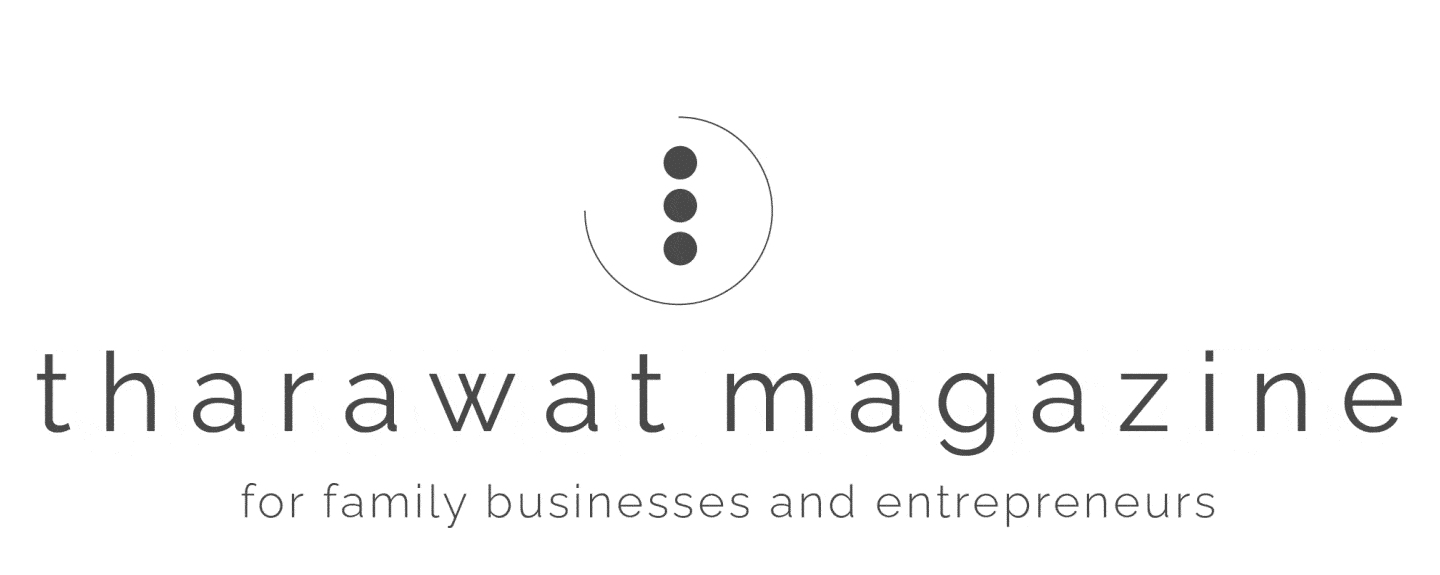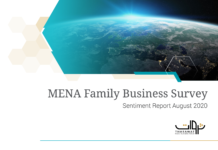Gianluca Mauro first became immersed in AI after earning a Fulbright Scholarship and spending six months on a placement in Silicon Valley. At that time, AI was the most common topic of discussion amongst the tech-savvy population there. But outside the Silicon Valley bubble, very few understood it or knew how to implement it.
Gianluca was fascinated by technology and its impact on businesses. Finding himself unable to stand on the sidelines and watch, he leapt in with both feet.
Enter the AI Academy.
Launched in early 2018 to help businesses transition into a world increasingly permeated by AI, the AI Academy is an Italian company based in Rome. Gianluca and his team help businesses understand how AI works, how it can improve their operations and why AI is the bet to make.
Tharawat Magazine had the opportunity to sit down with Gianluca to discuss current trends in AI, how it will impact businesses in the future and how they can take advantage of this revolution.

What are the main challenges that companies face when they are presented with the opportunity to integrate AI?
Most companies think that technology is the challenge. They believe that if they want to get value out of AI, they need some incredibly complex algorithm that is going to cost them a lot of money. This is not the case at all. In fact, AI is very democratic. The technology is cheap to develop because there are a lot of open-source implementations on the market.
The real challenge is simply awareness. Most people don’t realise that often, when you have a problem with your business, AI can solve it. Many companies are sitting on a gold mine of data but are not digging. My job is to help them identify the gold mine and show them how to dig. People don’t have to become data scientists to take advantage of AI; they just need to know where there is an opportunity. That’s why we are trying to teach companies the basics of this technology so that they can look at their business problems as issues that can potentially be solved using AI.
A lot of family business owners may be wondering if implementing AI in the company means that they will have to let people go. What kind of discussion do you have around that subject with the companies you work with?
It’s important to keep in mind that AI is not the giant autonomous robots people are used to seeing in movies like the Terminator. That is called general AI, and it’s still very far away. What we are talking about are some of the applications of AI today that are bringing great value to both people and businesses. For instance, Netflix is using AI to recommend movies. It’s a simple application, but it saves them one billion dollars per year from people who keep the subscription service instead of cancelling it. Similarly, Amazon makes 35 per cent of its revenues from the recommendations its AI system offers to users.
The other point I make to small business owners is not to look at AI as something that can replace people, but rather as something that replaces tasks. If you own a restaurant, you are not going to replace your waitstaff with robots. But with AI, you can automate some of their tasks, such as the monthly inventory. Imagine if they didn’t have to manually count bottles and food supplies because an AI system was automatically tracking everything. You would probably have much happier staff because a boring, repetitive task has been taken off their shoulders. They can focus more on entertaining the customers and may very well provide better service.
My philosophy is that human beings are not designed to do repetitive tasks. We are designed to be creative and empathic. Businesses should identify repetitive tasks and see whether AI can take them on.
The AI Academy’s mission is to empower businesses and individuals to unleash AI’s potential by understanding it first. What was your vision when you started it?
We wanted to speed up the process of spreading artificial intelligence through traditional companies. Tech companies are already there. As of 2017, Google identifies itself as an AI company rather than a mobile platform company. But traditional businesses are mostly lagging behind. They are trying to make sense of it, but there is still a lot of confusion over what AI really is. Our goal is to make the implementation of AI in other businesses as fast and easy as possible.

What is the adoption of AI going to mean for family business owners in terms of their role as job creators?
It’s hard to say whether there will be more jobs lost or created. What is certain is that the worker of the future is going to be a happier worker because he or she can focus on what really matters to them. We already see this in many cases.
There is a company in a Rome called Translated. It’s the leading translation company in the world, and it works by connecting clients with professional translators. AI performs the initial translation, which is then given to a professional translator who modifies and improves it. What they found is that simple sentences prove to be the most tedious to translate, but the AI function handles them nearly perfectly. The result is that the translators are happier because AI takes care of the repetitive, boring tasks involved in the translation process.
A lot of technical jobs will be created for people who build these systems, but it’s hard to predict what other new jobs are going to be created by AI.
[ms-protect-content id=”4069,4129″]
How can a business understand where the best point of departure is?
There are different ways you can start looking at possible integrations of AI in a business. The one I just mentioned is probably the easiest, but it is just about cutting costs. The area I love to work in is value creation. This is when you have a very specific data set that enables you to implement features that were unthinkable before.
Square, the POS company, offers a very good example of this. They launched a new initiative called Square Capital, which offers microloans to small businesses. Banks don’t usually do this because assessing whether the business is a good risk is an intense task. Using POS data, Square can calculate exactly how much money a business makes. Through AI, they can also predict how much the company is going to make in the coming months and years, which enables them to quickly determine whether that business represents an acceptable risk. Through this approach, Square can award a small business a loan within 24 hours. This would have been unthinkable in the pre-AI world.

What are the most significant changes you have seen in companies that have overcome that initial resistance and have successfully implemented AI solutions in their day-to-day operations?
For the majority of traditional businesses, the process is still underway. There is still work to be done to take full advantage of the technology’s potential. We have already mentioned the difference between AI applications that automate boring, repetitive tasks and AI applications that create new, disruptive products or services. Most companies are focused on the first type, as opportunities are easier to spot. Those who have implemented these applications successfully have seen a great increase in productivity and made their decision-making processes more accurate and faster.
If I were to give a tip to small business owners that want to experiment with AI, it would be to take a look at companies like Google or Microsoft that sell machine learning and AI as service solutions. Small businesses can get started with new AI projects by looking at what part of their operations can be automated and improved with these “out of the box” solutions. Finding data scientists is still hard and often expensive; these tools allow businesses to quickly test new ideas without spending resources in hiring AI talents. With this mindset, it’s easier and faster to identify areas of the business that can take advantage of this.
If a business owner then decides to get more serious about using this technology and make it a key differentiating element for the company, I suggest starting with a greenfield approach – thinking about how to make the seemingly impossible possible.
[/ms-protect-content]















